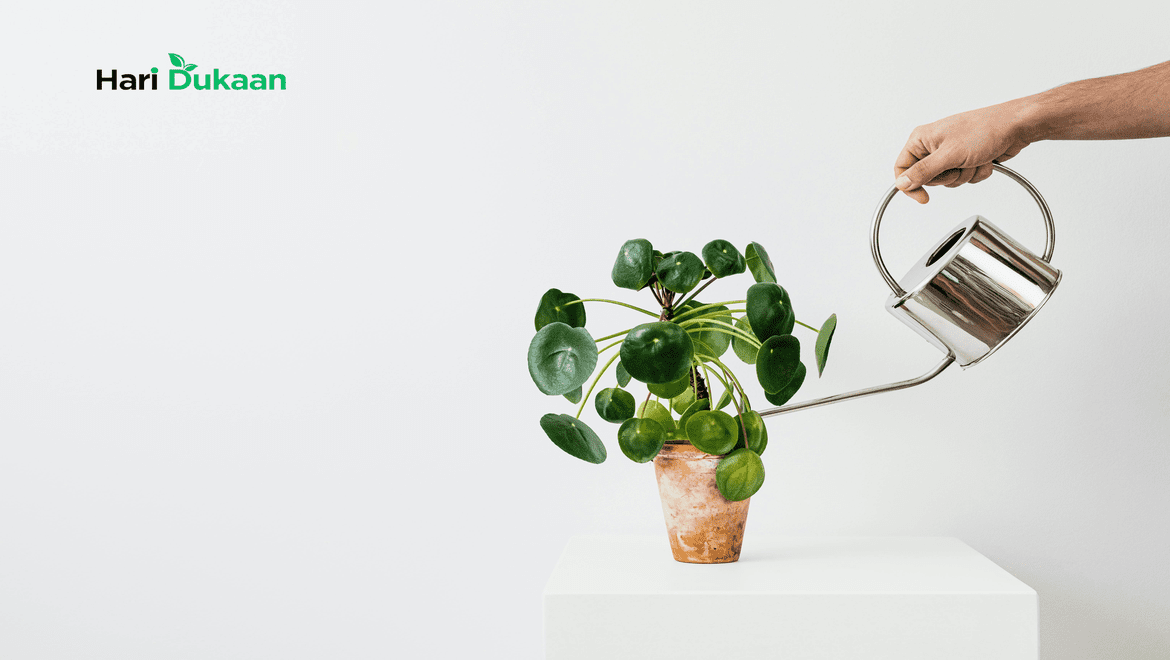- Your cart is empty
- Continue shopping
How much water do plants need? This is a question every plant owner asks, especially when caring for new leaves or reviving wilting stems. The answer is straightforward: it depends on the type of plant, the season, and where the plant is placed.
What Makes Some Plants Thirstier Than Others?
Plants like succulents and cacti don’t need much water—they’re built to store it and thrive in dry soil. Tropical houseplants and ferns, however, prefer damp conditions and need a regular drink. Flowering plants get thirstier during blooming. Knowing what category your plant fits into is the first step in giving it the right care.
How Can I Tell If My Plant Needs Water?
There’s a simple way to check: stick a clean finger into the soil, about 2 cm deep. If the soil feels dry, it’s time to water. If it’s damp or cool, wait a day or two. Busy plant parents often use moisture meters, which give a quick reading and keep watering anxiety in check.
Is There a Chart That Shows Watering Schedules?
Yes, here’s a practical plant watering chart you can follow. Remember, this is a guide, not a rule—always let your plant’s leaves and stems tell the real story.
| Plant Type | Typical Weekly Watering | Quick Tip |
| Cacti & Succulents | Once, let soil dry out | Avoid soggy pots; use well-draining soil |
| Houseplants (Tropical) | Once, keep the soil moist | Drain excess to prevent rot |
| Ferns & Orchids | 2-3 times, keep moist | Mist for humidity and use distilled water |
| Flowering Plants | 2-3 times, ramp up in bloom | Water the base gently, more during flowering |
| Vegetable Beds | 2-3 times, ensure 2 cm depth | Water in morning, mulch keeps soil hydrated |
Why Does Watering Change in Different Seasons?
Plants grow faster in spring and summer, which means their roots are thirstiest. When autumn rolls in, many slow down and need less water. The trick is to watch for cues: yellow leaves or mushy stems mean you’re watering too much. Droopy or crispy edges signal a parched plant.
Can Overwatering Really Hurt Plants?
Absolutely! Overwatering is the leading reason houseplants die. When roots stay wet too long, they lose oxygen and begin to rot. That’s why drainage holes and letting soil dry between watering matters so much. If there’s no runoff from the bottom of your pot, check for blockages or re-pot with fresh soil.
What’s the Easiest Routine for Busy Plant Parents?
- Group plants with similar needs together for easy care.
- Use room-temperature water to avoid shocking roots.
- Water early in the day so leaves dry before night (reduces mold risk).
- Keep a small notebook or phone note with watering dates—patterns help you spot problems before they start.
How Much Water Do Plants Need—In Simple Volume Terms?
If you’re unsure, a general guide is to:
- Water with about 5–10% of your pot’s soil volume each session.
- For garden beds, aim for roughly 2 cm deep of water each week.
- Always factor in rain, humidity, and sunlight—the drier and sunnier your space, the more water your plants will use.
Frequently Asked Questions
Should I water plants from above or below?
Water at the soil base, not over the leaves. You can also use bottom watering—place the pot in a tray of water for 10 minutes, then remove and let excess drain.
What if I miss a watering?
Most plants recover with a good soak. Remove dry, crispy leaves, and don’t panic—a day or two of dryness is rarely fatal.
Can tap water harm some plants?
Some sensitive plants prefer distilled or filtered water, especially if your tap water contains chlorine or fluoride. Ferns and orchids are especially sensitive.
The Takeaway
How much water do plants need isn’t a one-size-fits-all answer. Knowing your plant’s species, environment, and signals leads to healthier growth. Start with the plant watering chart, observe, and adjust. Your plants will reward you with vibrant leaves, steady growth, and blooms that last.
To get more care tips, follow HariDukaan on Instagram!

